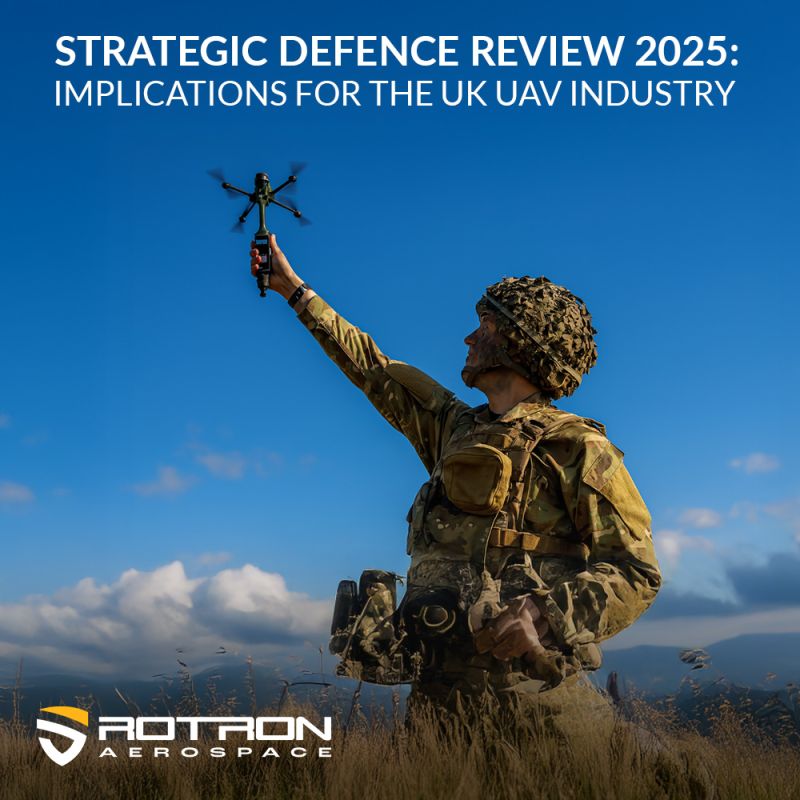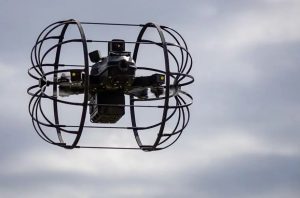Introduction to Drones in the UK: Understanding the Impact of SDR 2025
The drone industry is experiencing rapid progression, impacting both commercial and military sectors significantly. The UK’s 2025 Strategic Defence Review (SDR) represents a pivotal shift, focusing on autonomy, industrial independence, and accelerated innovation. This guide explores the current state of drone technology, UK legal regulations, and how Rotron Aerospace is influencing the UAV industry’s future.
Overview of the UK UAV Industry
The UK UAV sector is on the brink of a transformative phase, spurred by SDR 2025. This review heralds a shift towards integrated, agile, and uncrewed capabilities, offering unparalleled growth and innovation prospects within the industry.
- Autonomy and Innovation: With an emphasis on autonomy and sovereign innovation, the UK is poised as a leader in next-gen defense capabilities, focusing on modular UAV systems and advanced propulsion technologies.
- Regulatory Framework: The UK’s regulatory landscape adapts to balance safety with industry expansion, including updates to drone laws ensuring safety standards comparable to manned aviation.
Rotron Aerospace: A Leader in UAV Innovation
Rotron Aerospace is at the forefront of transformation, utilizing its prowess in propulsion systems and modular UAV designs.
- High-Reliability Propulsion Systems: Their rotary propulsion systems are tailored for next-gen defense applications, crucial for the UK’s strategic shift towards autonomous and agile capabilities.
- Modular Design Principles: Their designs align with the SDR’s focus on integrated and scalable uncrewed systems, enabling rapid response to operational changes.
- Digital Warfighting Standards: Compliance with digital warfighting standards, such as the UK’s Digital Targeting Web, is maintained to enhance combat effectiveness and flexibility.
UK Drone Laws and Regulations 2025
Understanding the legal context is vital for both recreational and commercial UK drone users.
Key Regulations:
- Registration and Licenses: Operators must register drones between 250g and 25kg annually with the CAA and pilots require a Flyer ID, secured via an online test.
- Height Limit: Drones are restricted from flying above 400 feet to avert interference with manned aircraft.
- Visual Line of Sight (VLOS): Direct line of sight must be maintained by operators.
- Restricted Airspace: Permission is mandatory for flying in restricted areas, especially near airports.
- Distance from People and Built-up Areas: Maintaining a safe distance from people and built-up areas is required.
Emerging Trends and Technologies
- Remote ID: The UK will soon implement Direct Remote ID requirements, allowing drones to broadcast identification and location data for enhanced safety.
- Geofencing: This technology restricts drone access to sensitive zones, preventing unauthorized flights.
Business Applications of Drones
Drones have evolved beyond hobbyist tools to essential assets in various industries.
- Aerial Photography and Surveying: Drones with high-resolution cameras are transforming photography and surveying, providing detailed landscape and infrastructure insights.
- Delivery and Logistics: Firms are testing drone delivery systems to boost efficiency and cut costs in logistics.
- Agriculture: Employed for crop monitoring, precision farming, and spraying, drones enhance agricultural productivity.
Expert Tips and Success Stories
For aspiring entrants into the drone market, here are expert suggestions:
- Begin with Legal Compliance: Understand and adhere to all relevant drone regulations.
- Invest in Quality Equipment: Select drones with features apt for your needs, whether for photography or other uses.
- Practice and Train: Regular practice improves flying skills and safety.
Conclusion
The UK’s drone sector is on the verge of substantial growth, driven by SDR 2025’s focus on autonomy and innovation. As leaders like Rotron Aerospace push UAV technology boundaries, it’s crucial for both enthusiasts and professionals to grasp the legal and technical environment. This guide provides a comprehensive overview, assisting users in navigating and succeeding in this dynamic field.
Additional Resources:
- For in-depth UK drone regulations, visit the Civil Aviation Authority: www.caa.co.uk.
- Learn more about Rotron Aerospace’s innovative solutions at their website: Rotron Aerospace.
This guide offers a comprehensive understanding of UK UAV industry advancements, highlighting Rotron Aerospace’s significant role and offering practical advice for drone users and businesses. Staying informed about technological and legal progressions is essential as the drone sector evolves.













